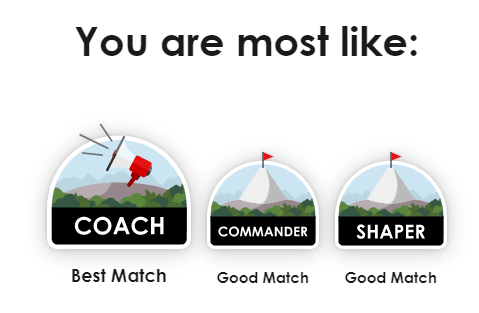Measuring What Really Matters to You – Reaching Your Personal Goals Through Objectives and Key Results
If you are a regular reader of Life-Sparring, you know that goal-setting is a recurring theme of the blog. I experimented with SMART New Year’s resolutions in 2016 and tried out “mini habits” in 2017.
Recently I came across OKRs, Objectives and Key Results, a method used in the corporate world to set goals and align the organization. I first read about OKRs, then also got the opportunity to implement OKRs on the department level, in the e-commerce company I am working in.
Spending a bit of time with the system professionally made me appreciate it even more and motivated me to try out OKRs for my personal development. I also recorded a round of the Life-Sparring Podcast on the very same topic. With Simon Klaiber, I got the perfect expert guest for the show. Simon works as a business agility coach and consultant in Germany and also runs the Personal Agility Podcast. Unfortunately, Simon’s Podcast is in German.
If you prefer hearing about OKRs instead of reading, you can head to the podcast section of this website or listen straight here, via the embedded player.
While podcast and blog cover the same topics, I think they are still quite complementary. But let me know, how you like this experiment of launching both content offerings in parallel.
OKR - A Simple Idea, Easily Misunderstood
OKRs, Objectives and Key Results are not exactly a recent invention. Pioneered by then CEO of Intel, Andy Grove, in the mid 1970ths, they were used for the longest time as an internal framework to set concise and measurable company goals and align the organization behind its strategic objectives behind them.
Through venture capitalist John Doerr, OKRs eventually were introduced to Google in 1999, and from there, conquered the rest of Silicon Valley. More recently, especially since John Doerr’s book “Measure What Matters” (Amazon Affiliate Link here) became a #1 New York Times Bestseller in 2017, OKRs received a boost outside of the US tech sector.
The idea of OKRs is compellingly simple: The company sets qualitative objectives, strategic goals of the organization. Each of these strategic objectives is matched with typically 3-4 key results, measurable outcomes that confirm that the objective has been completed.
In the words of John Doerr: “An OBJECTIVE, (…) is simply WHAT is to be achieved, (…), KEY RESULTS benchmark and monitor HOW we get to the objective.
Or formulated mathematically, also by Doerr, “I will accomplish ‘X’ Objective as Measured by ‘Y’ Key Result.”
Objectives can have longer time horizons; key results are usually set quarterly to create a rhythm that pushes the company forward towards long-term strategic goals and still offers the possibility to adjust and react to new circumstances.
A key result from one corporate level within a company can become an objective for the level below. A cascading system of objectives and key results can be built that reaches from a top-level corporate goal to team goals, creating transparency, alignment, and accountability.
As agility coach Simon Klaiber emphasizes in our podcast on the topic, OKRs are a powerful tool that can be easily misappropriated.
One way to misuse OKRs is to set top-down goals and use the system’s transparency to pressure individual team members, possibly by tying incentives to key results.
As John Doerr explicitly stated in Measure What Matters, OKRs should never be tied to incentives of any kind. This could lead to teams locally optimizing for their key results instead of contributing to the company's top-level goals.
In a sound OKR system, the teams should set Key Results; they should not be set top-down or negotiated between the top and middle management.
OKR systems can create other problems if not done well, for example, a narrow focus on the defined, measurable outcomes. Focus is only good if we focus on the right things. The quarterly updated OKRs also can lead to a overemphasize of short-term goals.
If these points are addressed and taken care of, an OKR system can do wonders regarding focus, alignment, transparency, and accountability.
A Good Goal is Worth Stretching For
Making sure to avoid pitfalls when establishing an OKR system is one thing; finding good OKRs is another challenge.
As Sachin Rekhi, CEO of Notejoy, writes in his Blog on OKRs, “great objectives should be significant, concrete, finite, action-oriented and inspirational.”
Objectives are qualitative; they don’t necessarily have to e measurable. Key results are where the measurability comes in. Key results should be smart, meaning they are specific, measurable, achievable, realistic, and timely.
To get the best out of the organization, goals should be stretch goals that require the organization to go the extra mile to reach the goals. Because of that, it should never be the expectation to achieve all goals. Most OKR systems (aim at something like 70% goal achievement), an approach that doesn’t come naturally in all cultures, as Simon observed in our podcast.
When setting OKRs, the key results should be defined by outcomes and not by output variables. If my objective is to get in shape, my goal should be to reach a target weight and to set a new personal best for running a 10k, but not going to the gym twice per week. Going to the gym is an output that I control and can game; beating my previous personal best is an outcome that I only control indirectly by putting in the work.
OKRs for Personal Goal-Setting – Aligning with Yourself
Why use a method developed to align big companies behind their strategic goals for your personal goals? Unless you have a dissociative identity disorder, alignment and accountability are not that much of a problem when setting goals for yourself.
For me, the biggest value in a personal OKR system is the logic behind the goal-setting process. Traditional new year’s resolutions are often purely output-oriented: I will go to the gym; I will run 10km every week.
Following the OKR logic and defining objectives like “I want to be in significantly better physical shape than I was in the past five years” and then in the next step defining strong key results like the goal weight, a time for running a 10k, a new bench press personal best or a goal for waist circumference, give you a very different perspective.
For Simon, one thing that makes OKRs special is that they create essentially three different levels of decision-making, similar to the agile framework of flight levels. There is the strategic level, where you set your objectives, the coordination level, where you define your key results, and then an operational action level, where you actually decide what to do.
All of these three levels have different time horizons. Your objective to be in the best shape since high school might be an annual goal; your key results to lose 3kg body weight and add 20 pounds to your bench press record might be something to achieve by the end of the second quarter, but your diet and training plan could be set week by week. Big birthday dinner ahead? Go for an extra-long run to compensate for the calories.
If you have the necessary discipline to maintain the system and hold a regular review to check on your progress, you end up with a long-term goal system that still gives you a lot of room to experiment and pivot if you feel that you get stuck in your ways.
Just make sure to follow Simon’s most important advice on OKRs, to let the system work for you and not the other way around. Missing goals is not a drama, as long as you learn from the experience and make adjustments.
Simon runs his personal OKR system old-school with pen & paper. I dabbled a bit with different apps (that’s how I am wired) before settling for Koan, an OKR app recommended on John Doerr’s whatmatters.com website.
Koan, a pretty good app to manage personal OKRs
Koan is pretty self-explanatory and completely free for personal use; they only charge for features like data export, corporate levels, and other things not really relevant for setting your own goals. Koan also sends you a weekly reminder to complete your “reflection.”
I hope the combination of the podcast and this written Life-Sparring round was enough to give you an idea of OKRs and how they potentially can help you to get closer to your long-term goals.
I will continue to experiment with OKRs for the remainder of the year and for sure do a follow-up either in written or recorded form. Stay tuned!







